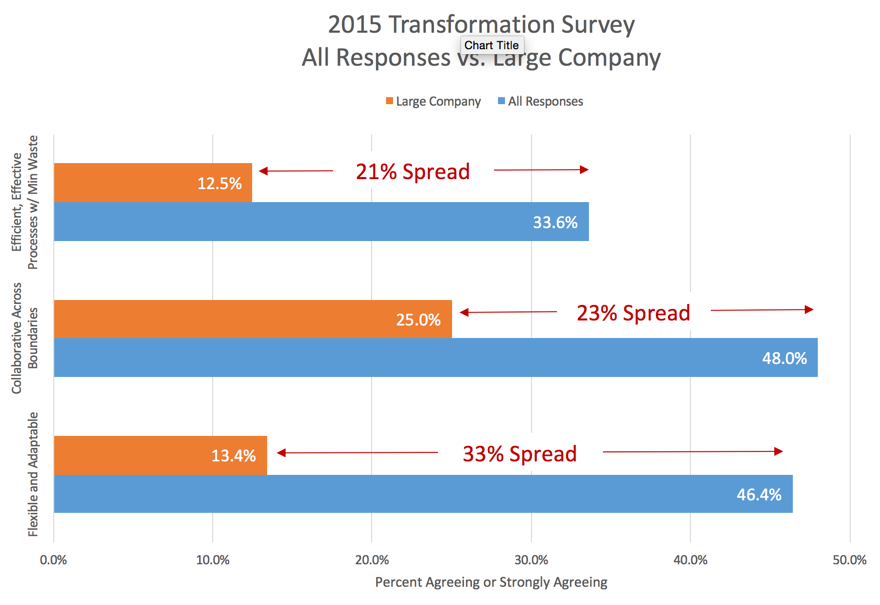What’s something big business really needs to focus on to be more innovative?
It’s readily apparent at nearly every large business. Big businesses struggle with innovation. They also struggle with process. And just as commonly, they struggle with collaboration across organizational boundaries, i.e., silos. These issues are interrelated. So is the solution to them. Simplify outputs.
The problems are readily apparent in the ThinkPoints® 2015 Transformation Survey results. Even though all organizations of varying sizes across industries showed issues in these areas, when compared to all responses, big businesses fared worse… much worse.

Source: 2015 ThinkPoints™ Transformation Survey, ThinkWay Strategies LLC.
The problems have a compounding negative effect on the organization’s overall ability to innovate, be flexible, and adapt.
As a result, most big companies embark on an effort to transform by redesigning their processes, especially their innovation processes, often with simplification as a goal.
But the data shows most of those transformation efforts fail to achieve the desired objectives. Only 27% of big businesses across multiple industries report they achieve their transformation objectives compared to 41% of all organizations.
But those results can be dramatically improved.
Here’s a tip: Don’t start with process redesign and simplification. Start with output simplification. Instead of mapping processes, map outputs.
Simplifying outputs has several advantages.
First, simplifying outputs refocuses the organization on the customer receiving the output to determine its value. That means, producers have to talk, often across organizational boundaries, with the customer of their output who in turn has to talk with the customer of their output and so on. A focus on simplifying outputs increases internal collaboration.
Second, with proper governance, a focus on simplifying outputs forces the organization to evaluate whether or not the output is valuable enough to warrant a process at all. If this question isn’t answered first, the organization might spend considerable time redesigning and simplifying a process that shouldn’t exist in the first place. The simplest process is the one that no longer exists.
And finally, focusing on simplifying outputs identifies why any particular output –and its key characteristics– is important in the first place. That’s a precursor to process innovation and simplification. Only then can the organization determine the most efficient and effective process necessary to produce a given output.
A focus on simplifying outputs increases collaboration, eliminates unnecessary work, increases internal innovation, and leads to improved process effectiveness and efficiency. Just what big businesses need.